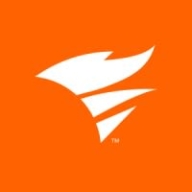

Cisco Nexus Dashboard Fabric Controller and SolarWinds Network Device Monitor compete in the network management category. Cisco seems to have the upper hand in support and pricing, while SolarWinds is preferred for features and functionality.
Features: Cisco Nexus Dashboard is known for its robust stability, comprehensive network visibility, and exceptional monitoring and automation features. It efficiently integrates with various network elements, providing enhanced automation capabilities. SolarWinds offers integral monitoring features with performance accuracy and strong alerting systems. Its ease of use, detailed reports, and alerts enable proactive measures.
Room for Improvement: Cisco Nexus Dashboard could enhance its user interface complexity, report intuitiveness, and integration with other tools. Setup challenges and the need for improved feature integration and scalability are noted. SolarWinds should focus on user-friendliness, reducing security issues, and refining its discovery feature.
Ease of Deployment and Customer Service: Cisco Nexus Dashboard and SolarWinds support on-premises and private cloud deployments, with SolarWinds also supporting hybrid cloud environments. Cisco's technical support is praised for being responsive and high-quality, whereas SolarWinds provides competent support requiring fewer user interventions.
Pricing and ROI: Cisco Nexus Dashboard is considered expensive but offers value through its comprehensive features and favorable ROI for long-term users. SolarWinds is slightly more cost-effective, though still viewed as costly by some users. Despite costs, it offers reasonable ROI due to ongoing enhancements and reliable performance.
| Product | Market Share (%) |
|---|---|
| Cisco Nexus Dashboard Fabric Controller (Formerly DCNM) | 0.6% |
| SolarWinds Network Device Monitor | 0.6% |
| Other | 98.8% |


| Company Size | Count |
|---|---|
| Small Business | 10 |
| Midsize Enterprise | 6 |
| Large Enterprise | 15 |
| Company Size | Count |
|---|---|
| Small Business | 6 |
| Midsize Enterprise | 4 |
| Large Enterprise | 14 |
The Cisco Nexus Dashboard Fabric Controller (NDFC) offers a comprehensive solution for managing Cisco NX-OS switches in hybrid-cloud environments, providing automation, visibility, and consistent operations. Designed to simplify and enhance data center management, NDFC integrates with Cisco Nexus Dashboard to streamline network connectivity, reduce deployment times, and ensure seamless transitions with minimal disruptions. Its modular architecture, new user interface, and support for non-Nexus OS platforms make it a robust tool for LAN, SAN, and IP Fabric for Media management. Additionally, NDFC enhances fabric reliability, automates workflows, and supports cloud connectivity with AWS and Microsoft Azure, making it ideal for businesses adapting to increasingly complex digital environments.
We monitor all Network Monitoring Software reviews to prevent fraudulent reviews and keep review quality high. We do not post reviews by company employees or direct competitors. We validate each review for authenticity via cross-reference with LinkedIn, and personal follow-up with the reviewer when necessary.